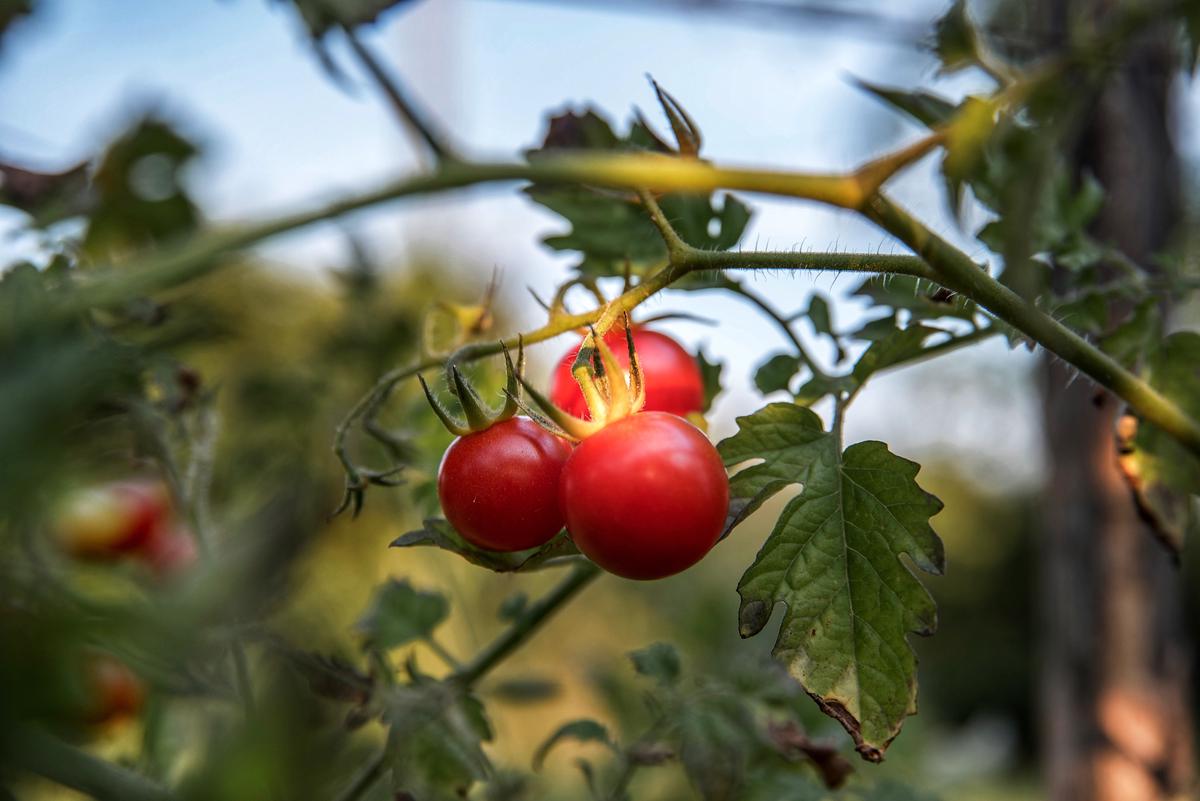Decoding Tomato Plants’ Sunlight Needs

From the vibrant, sun-kissed fields of farms to the tranquil corners of urban balconies, tomato plants dot the landscape with their verdant green foliage and luscious red fruits. They speak of nature’s bounty and the magic of photosynthesis, the process that turns sunlight into food not just for them, but for us as well. Deep beneath this enchanting surface, there’s a science to understanding how the sun fuels these plants, pushing them from tiny seedlings to bountiful, fruit-bearing plants. The purpose of our exploration is to understand photosynthesis in the context of tomato plants, how much sunlight they need across different stages of growth, and practical means to adjust their sunlight exposure.
Understanding Photosynthesis
Unveiling the Sunlit Secrets: The Connection Between Sunlight and Photosynthesis in Tomato Plants
Plentiful sunshine and tomatoes go together like gardening gloves and a well-tilled plot; they’re simply inseparable. Understanding the intimate connection between sunlight and photosynthesis in tomato plants is key for anyone keen on growing healthy, bumper harvests of this wildly popular garden staple. Buckle up, fellow enthusiasts, for this knowledge powerhouse is bound to illumine your tomato raising journey!
Sunlight’s Role in Photosynthesis
Tomatoes truly are the sun-worshipping aristocrats of the vegetable kingdom. Like all green plants, tomato plants trap the sun’s energy to fuel a process called photosynthesis, their stellar way to prepare food. But what sets the tomatoes apart? It’s their high sunlight requirement, demanding a grand six to eight hours of full sunlight per day. The more sunbeams they soak, the tastier and more abundant their juicy red fruits grow!
Photosynthesis: The Marvel in a Nutshell
Photosynthesis is a plant’s food-making wizardry that happens mainly in the leaves. Here, the chloroplast-filled cells absorb the sunlight, acting like miniature green solar panels. This captured energy, combined with carbon dioxide from the atmosphere and water absorbed through the roots, produces two vital things: glucose and oxygen.
Glucose is the powerhouse nourishing the plant and aiding its growth and fruit production. It’s the ‘tomato maker’ if you like! On the other side, oxygen, the byproduct of photosynthesis, is graciously released back into the atmosphere – a little gift from our tomato plants to us air-breathing creatures out there.
The Sun-powered Difference
The fascinating relation between sunlight and photosynthesis elucidates why tomato plants grown in shaded conditions are often, by comparison, gangly and feeble. The scarcity of sunlight leads to reduced photosynthesis and thus, less food. The plant becomes leggy, stretching out to hunt for more light, resulting in fewer and smaller fruits.
On the contrary, tomato plants basking in full sunlight thrive. They go about photosynthesis diligently, producing a bounty of glucose for more vigorous growth, stronger defense mechanisms, and larger, lusciously tasty tomatoes. Make no mistake, those sun rays work like magic!
Final Tips for Tomato-growing Success
When planting, keep in mind the cardinal rule: Nothing less than 6 hours of sunlight for your tomato plants, please! If your garden gets limited sunlight, try using reflective mulches or placing your potted tomatoes on wheeled stands to follow the sun.
And there it is – the condensed science and art of the relationship between sunlight and photosynthesis in tomato plants. The sun is indeed a tomato plant’s best ally—just one more reason to be grateful for those warming rays. So, by all means, let’s guide our tomato plants into the light and watch them bloom with gratitude!

Photo by ddenkovski on Unsplash
Ideal Light Conditions for Tomato Plants
Title: Unlocking the Sun’s Power: Optimal Sunlight Conditions for Growing Tomato Plants
Alright, tomato-growing enthusiasts, let’s dive right in!
Having uncovered the fundamental significance of sunlight for the radiant red jewels, also known as tomato plants, it’s now time to delve into the specifics. We’re not just talking about a general amount of sun exposure here. No, we’re going to dissect the exact stages of a tomato plant’s life and discover the distinct sunlight conditions which promote optimal growth.
Let’s start at the very beginning: the germination stage. At this initial phase, a tomato seed lies dormant beneath the soil surface, away from direct sunlight. However, once those tiny green shoots emerge, they crave light – lots and lots of it. An impressive 14 to 18 hours of sunlight per day, in fact, encourages stronger root development and faster growth. While that may sound extensive, remember, these young seedlings are simply trying to solidify their formative footprints into the plant world.
After 5-6 weeks, when those baby seedlings grow into sturdy, young tomato plants, their daily serving of sunlight can indeed be reduced. Here, a minimum of 10 hours of direct sunlight will do. This stage will last until the plants start flowering, typically around 8-10 weeks. That’s plenty of hours for the sun to play its part in supporting the critical factors of growth: photosynthesis, respiration, and transpiration.
Now, the fruiting stage – the moment we’ve all been eagerly awaiting. This is when the real action begins. At this juncture, while sunlight remains vital, the requirement slightly eases off. As the plant prepares to bear fruit, 8 hours of full, direct sunlight daily allows for a healthy yield. Too much sunlight could cause your hard-earned fruits to sunscald.
Rainstorms and shady festoons of leaves can sometimes thwart the sunlight access. Fear not, though. Tomato plants are quite resilient and can withstand short-term sunlight deprivation. Prolonged cloudiness or shade, however, can adversely affect fruit production.
There you have it, folks – a detailed guide to the optimal sunlight conditions for each stage of your tomato plant’s growth. It’s all about finding that precise balance of light for your ‘maters. Stay tuned in to your plants, adjust as needed, be patient, and before you know it, you’ll have a garden overflowing with ripe, juicy tomatoes ready to be savored.
Remember, whether it’s the seedling, growing, or fruiting stage, the sun is the silent success fuel, governing the journey of your tomato plants from soil to salad. Good luck, and happy growing!

Adjusting Sunlight Exposure for Tomato Plants
When our precious tomato plants aren’t bathing in the appropriate amount of sunlight, we hobbyists have to step in and play sunny day hero. Though we’ve learned about photosynthesis and the essential role sunlight plays in cultivating healthy tomato plants, now we’ll discuss how you can tweak and temper that sunlight exposure to best suit our favorite fruits of labor.
A cornerstone of navigating the sunlight conundrum lies in understanding that tomato plants, like any living organisms, fare best in moderate conditions. Respecting the Goldilocks rule – not too much, not too little, but just right! – can contribute to spectacular harvests. So, how does one strike that delicate balance when it comes to sunlight?
In times of excess sun exposure, tomato plants can show signs of stress, such as curling leaves or developing sunscald on fruits. To prevent our delicious tomatoes from baking in the harsh sunlight, consider the strategic use of shade cloth. They’re easy to string up above your plants and can be customized to different sunlight filtering levels, usually ranging from 15% to 95%.
For the sun-drenched plots, with diligent observation, you can position your shade cloth to best block out mid-day sun, the most intense period of sunlight during the day. Alternatively, tall and broad-leafed companion plants like sunflowers can also provide natural shade, creating a win-win situation – an aesthetic appeal to your garden, and an effective shield against the scorching sun.
On the other end of the spectrum, if your plants are getting insufficient sunlight, act as the orchestrator of their photosynthesis and rearrange their locations, if possible. Select positions that offer your plants good daily east to west sun exposure. If your current plot is in the shadow of surrounding trees or fences, transplanting may be the solution for getting your plants the sunshine they need.
However, even in situations where manual transplanting is not feasible, worry not! Boosting sunlight is not only about direct exposure. The use of reflective surfaces such as light-colored walls, fences, or mulches can help redirect and maximize sunlight access for your tomato plants.
Ensuring optimal sunlight for your tomatoes does not involve a concise playbook; rather, it requires continuous observation and adjustments based on plant response. But remember, the enthusiasm, patience, and knowledge that make you an awesome tomato-growing hobbyist are the exact qualities that will assist you in successfully managing sunlight exposure for your tomato plants. Now, go out there, find the sun, and let your tomatoes bask in their ideal light conditions!

As we see, cultivating a humble tomato plant goes beyond mere watering and fertilizing. It plunges us into the fascinating world of photosynthesis and sheds light on the importance and impact of sunlight in the plant’s lifecycle. Every step from seedling to a mature, fruit-bearing plant asks for a varying degree of sunlight exposure, failure of which can jeopardize the plant’s health and productivity. Fortunately, there exist practical methods to control and adjust sunlight exposure, from positioning plants appropriately, using shade cloths, to employing indoor growing lights. Knowing and applying this knowledge not only maximizes the healthy growth of tomato plants but paints a larger picture of careful, considerate, and informed gardening.



